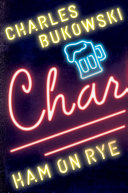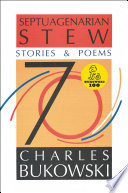Are you looking for the best Charles Bukowski books? We’ve narrowed down a list of the late author’s best works to get you started on your literary journey.
Choosing the best Charles Bukowski books can be a daunting task, considering the vast body of work he left behind. The prolific and influential author was known for his raw, gritty, and unapologetic writing style. He wrote more than 1000 poems in his lifetime, as well as several novels and short story collections.
For more recommendations, you might also enjoy exploring best adventure books, best David Sedaris books, or authors like Bill Bryson.
Table of Contents
Open Table of Contents
Charles Bukowski Books Ranked
1. Post Office
Post Office is Bukowski’s first novel, published in 1971 when he was 50 years old. This semi-autobiographical work follows the life of Henry Chinaski, Bukowski’s alter ego, and his experiences working for the United States Postal Service. The novel candidly captures Chinaski’s rough journey at his job, filled with drinking, gambling, and navigating arduous situations at the post office.
Post Office is known for its raw and unfiltered depiction of the protagonist’s life, making it a prime example of Bukowski’s unique literary style. It’s a perfect place for first-time Bukowski readers to get acquainted with his humor.
“‘The ocean,’ I said, ‘look at it out there, battering, crawling up and down. And underneath all that, the fish, the poor fish fighting each other, eating each other. We’re like those fish, only we’re up here. One bad move and you’re finished. It’s nice to be a champion. It’s nice to know your moves.’”
Charles Bukowski
2. Factotum
Another noteworthy novel by Bukowski is Factotum, published in 1975. In this book, readers continue to follow the life of Henry Chinaski as he drifts through various dead-end jobs while pursuing his passion for writing.
The novel presents a vivid and honest portrayal of the low-paid and often thankless jobs that many people face, making it a relatable read for those who have experienced similar plights.
_“On such jobs men become tired. They experience a weariness beyond fatigue. They say mad, brilliant things. Out of my head, I cussed and talked and cracked jokes and sang. Hell boils with laughter.” _
Charles Bukowski
3. Ham on Rye
Among Bukowski’s best works is Ham on Rye, another semi-autobiographical novel published in 1982. This coming-of-age story centers around Chinaski’s early life, depicting his difficult childhood, troubled adolescence, and, ultimately, his discovery of writing as a means of escape.
The novel offers a glimpse into Bukowski’s own upbringing in Depression-era Los Angeles, highlighting his coping mechanisms through Chinaski’s use of humor and sarcasm.
Although a harrowing read, it offers great insights about living through the Great Depression while managing to be relatable to modern readers who may have similarly tumultuous upbringings. It’s a must-read for fans who want to understand what made Bukowski tick.
“What a weary time those years were ― to have the desire and the need to live but not the ability.”
Charles Bukowski
4. Women
As the title suggests, 1978’s Women, delves into Chinaski’s relationship with women.
The novel showcases a series of encounters, both romantic and sexual, as he meets various women throughout his life. This raw portrayal of relationships offers a glimpse into Bukowski’s personal experiences and his views on love, lust, and everything in between.
What makes Womenunique, is that much of the plot takes place later in Chinaski’s life after he becomes a successful writer. Despite the success, we see him frequently reminisce on the struggles of his youth and express that he’s entering more risque relationships to make up for lost time.
While the graphic content may be offputting for some readers, it’s a blunt novel that seasoned Bukowski fans can appreciate. It’s also an insightful read for new Bukowski readers to start if they want to understand how he portrays female characters in other works.
“Being alone never felt right. sometimes it felt good, but it never felt right.”
Charles Bukowski
5. Hollywood
The 1989 novel Hollywood provides a satirical look at Bukowski’s experiences in the film industry. The author used Chinaski to voice his frustrations with his involvement in the Barfly*film, for which he wrote the screenplay.
The novel sees Chinaski’s frustrations grow as plans for a fictional film fall apart multiple times. When the project is eventually finished, Chinaski is left feeling disillusioned at the entertainment industry’s lack of depth.
Hollywoodis a brutally honest look into the film industry. It’s just as biting as the writer’s other works, but the glitz and glam of Hollywood make for an interesting change in scenery. There’s never a dull moment as the characters are much more eccentric than those in other Bukowski novels.
It’s a must-read for those itching to get a glimpse behind the curtain of film-making and for fans of the Barflymovie who are curious about what happened behind the scenes.
“Bad taste makes more millionaires than good taste.”
Charles Bukowski
6. Pulp
Pulpis considered Bukowski’s final novel, published posthumously in 1994. Unlike the other books thus far, the protagonist of Pulp is a private detective, Nicky Belane. The novel is one of Bukowski’s more quirky works as it’s meant to be a satire of pulp fiction. It sees Belane work on a series of bizarre cases involving femme fatales and even aliens.
The change of pace makes for a refreshing read as a more fictionalized story allows for Bukowski’s creativity to shine. Still, the Belane is just as haggard and gritty as Chinaski, which is what allows Pulp to blend in seamlessly with Bukowski’s collection.
Fans of crime fiction will find Bukowksi’s take on the genre refreshing.
“If you persisted long enough, the good luck usually came. Most people couldn’t wait on the luck, though, so they quit.”
Charles Bukowski
7. Hot Water Music
In Hot Water Music, Bukowski delivers a riveting collection of short stories. Published in 1983, this compilation contains 36 stories that encapsulate the blunt honesty synonymous with Bukowski’s work.
Readers can expect to find Bukowski’s signature raw and honest writing style in shorter, bite-sized pieces, ideal for reading on the go. The collection explores themes such as human emotions, depravity, and survival in a harsh world. Some standout stories consist of The Great Poet,Cold Night, and White Dog Hunch.
It’s a great starting point for those interested in reading Bukowski’s work without committing to a novel.
“That’s how they hooked you—they gave you just enough to keep alive but they never gave you enough so you could finally escape.”
Charles Bukowski
8. South Of No North
South Of No North, published in 1973, is yet another exemplary short story collection. This book contains 27 short stories that delve into the lives of ordinary people, with a focus on the working class.
Through his prose, Bukowski addresses themes such as loneliness, heartache, and the quest for meaning. A few remarkable stories from this collection include Confessions of a Man Insane Enough to Live with Beasts,No Way to Paradise**, andHit Man**.
Readers who enjoy stories about realistic protagonists dealing with the struggles of everyday life will love this book.
“He had nothing, and he found out that having nothing was difficult too.”
Charles Bukowski
9. Burning in Water, Drowning in Flame
Although Bukowski is best known for his prose, he was also a talented poet. One of his earliest collections, Burning in Water, Drowning in Flame, was published in 1974 and contains poems the author wrote throughout the 1950s and 1960s.
During this time, Bukowski experimented with different poetic styles while maintaining a focus on the visceral and honest language he was known for. His writing is thought-provoking, gutsy, and deeply engaging. Some of the stand-out poems are The Sunday Artist, Vegas, and Old Poet.
It’s the perfect place for new readers looking to explore Bukowski’s poetry or learn more about his earlier years.
“I awakened to dryness and the ferns were dead, the potted plants yellow as corn; my woman was gone.”
Charles Bukowski
10. On Cats
On Cats is a delightful collection of Charles Bukowski’s reflections and experiences with cats throughout his life. The book showcases Bukowski’s deep affection towards these feline companions and highlights their mysterious and alluring nature. It features both prose and poetry dedicated to the cats he encountered, as well as touching moments of love and companionship.
Although you can still expect Bukwoski’s raw writing style to shine through, this work is perfect for readers looking for something more optimistic and is the perfect gift for an animal lover. It’s charming, funny, and full of insight.
“Having a bunch of cats around is good. If you’re feeling bad, just look at the cats, you’ll feel better, because they know that everything is, just as it is.”
Charles Bukowski





